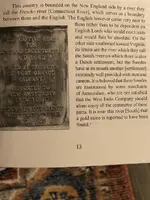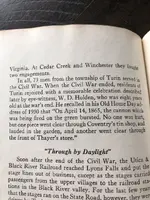Joe hunter
Bronze Member
- Joined
- Mar 2, 2013
- Messages
- 2,159
- Reaction score
- 1,896
- Golden Thread
- 0
- Location
- Up state NY
- Detector(s) used
- Xp Deus ,
- Primary Interest:
- All Treasure Hunting
Per the issue of sabotage....
An interesting tid bit of information I picked up in my 15 minutes of reading..during the Revolutionary War, civilian drovers were utilized to move cannons to their deployment positions. It was said that these civilian contractors would be the first to retreat when battle got heated as they were not paid to risk their lives and stock in battle.
Once they left, the soldiers had no way of moving the cannon, other than by man power.
I could see how retreating soldiers would have no choice but to sabotage their cannon.
“Artillery could fire up to 4 times per minute moving and faster when stationary, limited by the stamina of the crew and the available ammunition. The gunners achieved this speed by carrying fixed rounds with projectile, sabot and powder fixed together.”
I wonder if multiple “fixed rounds” were placed in the barrel ahead of a large charge of powder if the destruction would be different than a single charge of powder behind multiple projectiles? Is this possible? Just trying to figure a reason why the cannon would be in so many small pieces.
Could it also be possible that the cannon was surrounded by the powder magazine prior to being sabotaged, thus increasing the damage tremendously?
Fun topic to think about.
There several features on your cannon fragments which are useful for indicating age and origins. First there are sleeves or shoulders on the trunnions- that's quite a late feature, late 18th century but by the time it percolates down to these type of guns, 19th century.
There is no ring at the reduction from the breech to the chase- again a late feature. Both these features are more associated with French or Swedish design than British.
However there does appear to be a muzzle with a swell; implies earlier in the dating.
The button is very large and clumsy- suggests it is for weight to make the gun site right rather than real use.
Given the poor quality of the casting and catastrophic failure, I would think it was intended as a signal gun, and somewhere along the line, someone forgot. Dates 1830, with a decade either way.
Not surprised there are no marks- clearly it was not cast by a serious gunfounder, with a reputation to protect.
 I did think there design was more similar than others I’ve seen.
I did think there design was more similar than others I’ve seen.Funny you mentioned Swedish cannon i just started looking into them last night after reading this excerpt from a gold hunting book I got for Christmas View attachment 1889769I did think there design was more similar than others I’ve seen.
This is really not a gun supplied by any government. Not any official pattern, too small in length and calibre, no visible marks and a terrible casting.
The kind of thing most people only dream about. Congratulations! Would love to hear the back story on how you found this.
I’m sure you’re cannon is longer and of a much higher caliber.Your casting much more aesthetically pleasing but we must all deal with the cannon were given. [emoji3]
Wasn’t it quite common in the old days for towns (as well as families) to fire a cannon during special occasions (especially 4th of July)?
Could it be that a cannon used for this purpose had some false folklore attached to it perpetuating the idea it had been used in battle at some point. Someone decided to test it out and regretted it?
Depending on the proximity to old towns or settlements..could it be a possibility?
 apparently yes it is very ,very ,possible Turin is seven miles north of me.Makes me wonder if this cannon and mine may be connected in some way.What are the odds of two cannons exploding in such close proximity.Now I’ve got to read every local township book in the area.
apparently yes it is very ,very ,possible Turin is seven miles north of me.Makes me wonder if this cannon and mine may be connected in some way.What are the odds of two cannons exploding in such close proximity.Now I’ve got to read every local township book in the area.